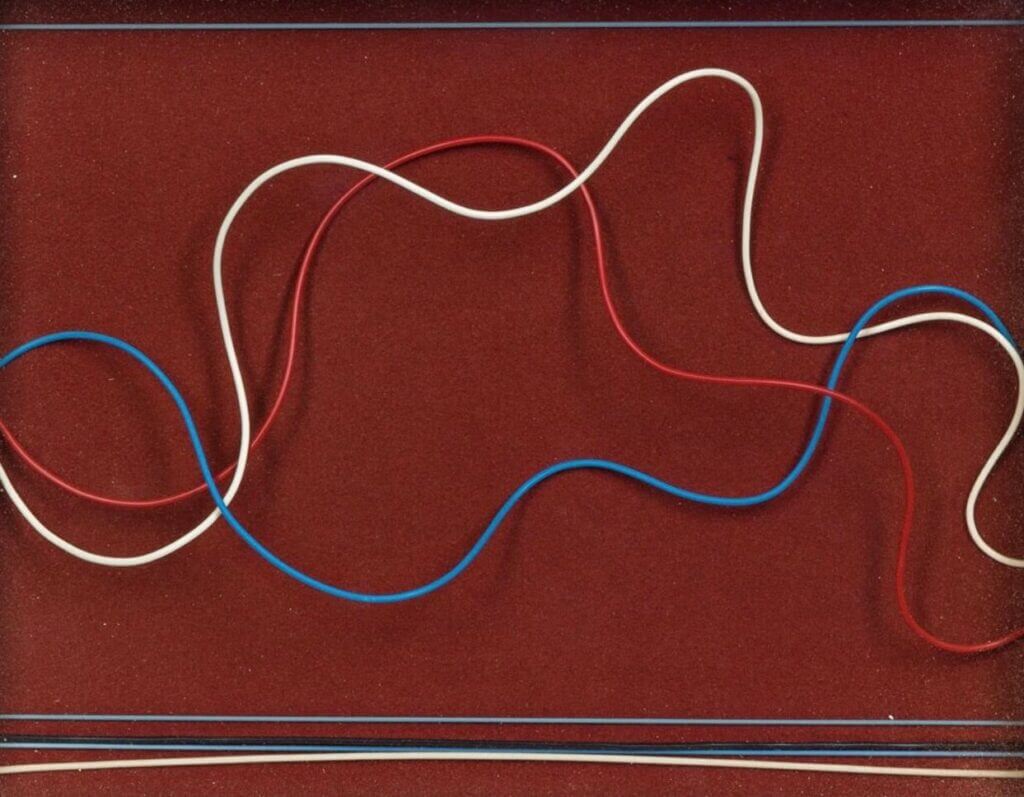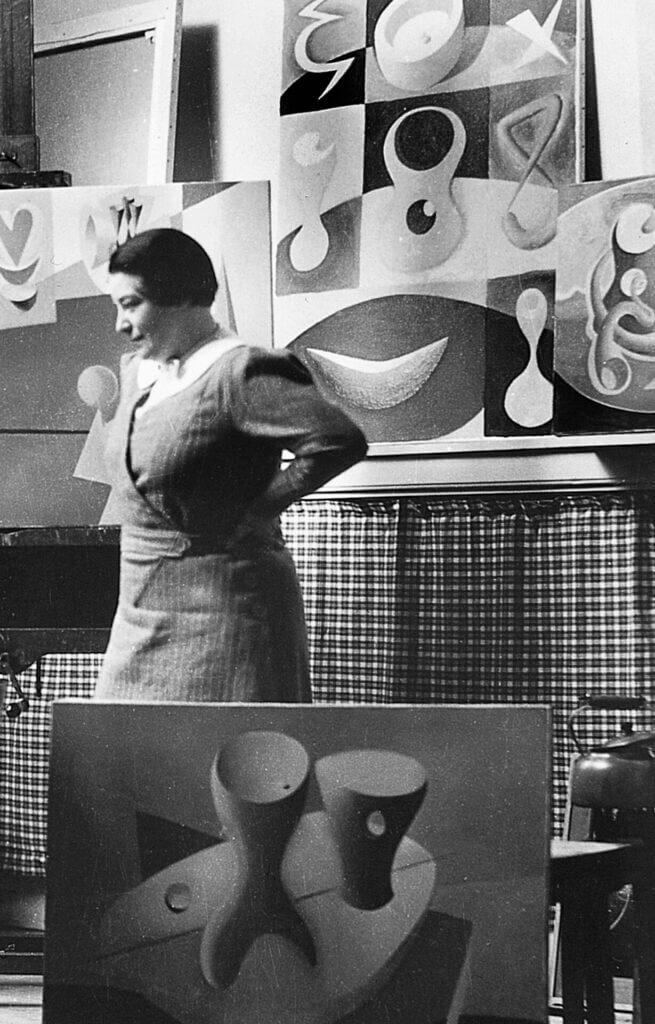Your currently viewing RAW Modern | Switch to RAW Contemporary
Lines in Space No 24, 1953
Catalogue essay by Blanche Llewellyn
Paule Vézelay, born Majorie Watson-Williams, changed her name to obscure both her nationality and gender. She also felt her new moniker better suited the modernism of her practice. A British artist, she embarked on her career as a figurative painter but during her residency in Paris, her so-called country of adoption, from 1926 to 1939, she transitioned from figurative to abstract painting. In France, she became closely associated with André Masson, Jean Arp, and Sophie Taeuber-Arp, and in 1934, she joined the avant-garde group Abstraction-Création.
Vézelay’s exploration of space led her to innovative approaches in abstraction, notably through her multi-dimensional constructions, considered pioneering works in the modern abstract movement. By 1940, she incorporated wires alongside threads, allowing the exploration of curves and straight lines creating obvious shadows adding depth against monochrome backgrounds. She experimented extensively with this technique, producing variations featuring colored lines, diverse backgrounds, and cut-out wooden shapes in relief. In an unpublished essay sent to the Tate Gallery in January 1964, Vézelay noted that “I knew that any untrained hand guided by borrowed knowledge could, with a minimum of practice, make lines on a two-dimensional surface in such a way that they create an illusion of three-dimensional space, but was there any reason why artists should continue to confine Living Lines to a two-dimensional surface while ordinary lines outside the Realm of Art enjoyed freedom in Space?”

